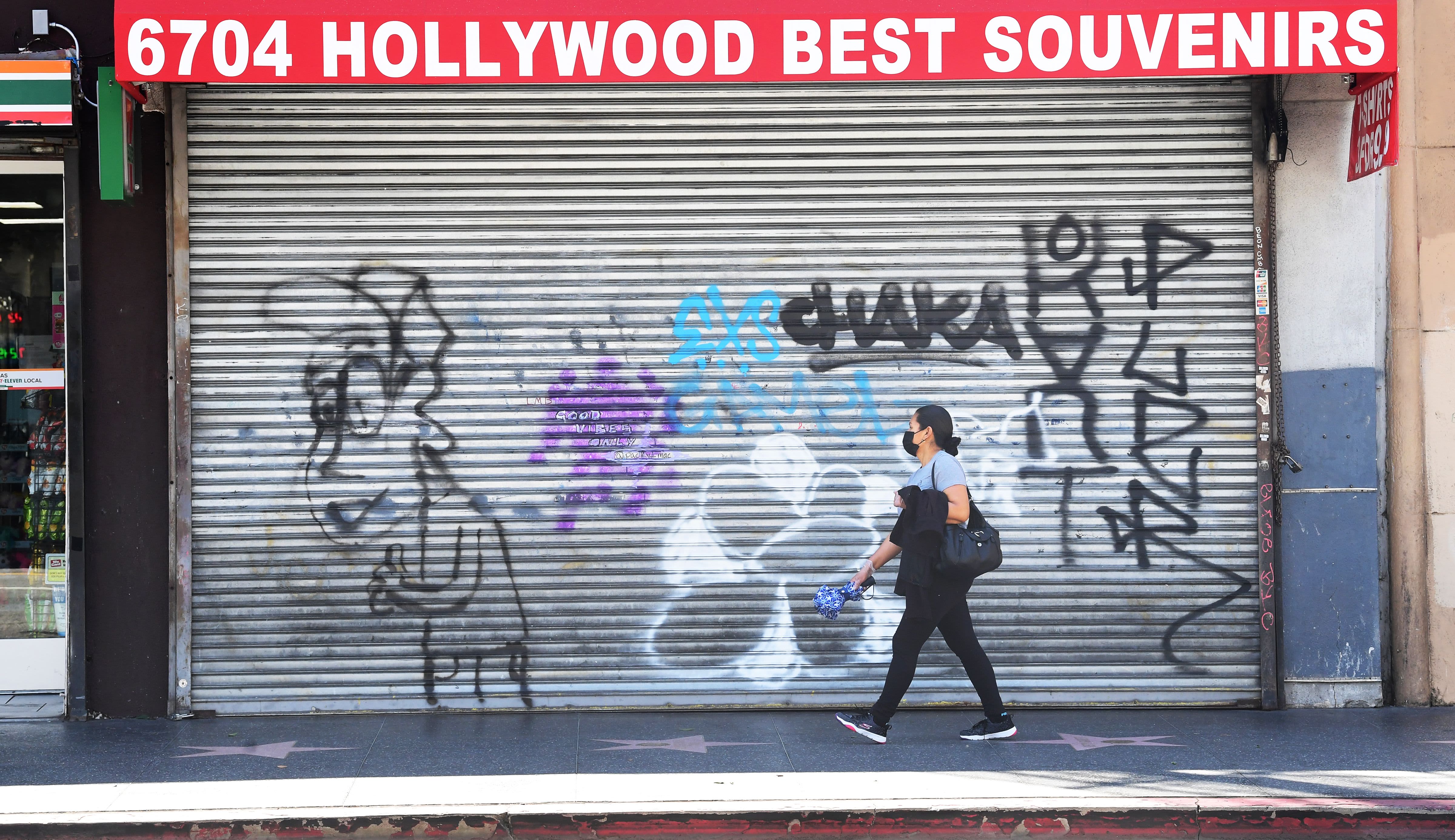A masked pedestrian walks past shuttered shopfronts in Hollywood, California on April 23, 2020.
FREDERIC J. BROWN/AFP via Getty Images
Many Americans collecting unemployment benefits may be wondering: Why isn’t my check bigger?
The $2.2 trillion coronavirus relief package enacted last month expanded unemployment benefits in several ways, partly by increasing jobless pay by $600 a week.
That extra money is in addition to any weekly benefits Americans receive through states’ traditional unemployment framework.
However, those $600 payments, which are available through July and funded by the federal government, are delayed in some states. Other states are paying the $600 separately from traditional state benefits.
The result: Unemployment checks may seem smaller than anticipated.
Jobless workers in Washington state, for example, will receive two payments each week – one for the $600 provided by the CARES Act legislation and the other for the “normal unemployment benefit” provided by the state, according to Washington’s unemployment website.
“Because payments are taking longer than usual to process due to the volume, there may be a gap between them,” the website said. “They are coming and we apologize for the delay.”
More than 26 million Americans applied for unemployment insurance in the five weeks through April 18, erasing all the jobs created in the decade since the Great Recession.
Hawaii, which has seen the biggest jump in unemployment claims relative to the size of its workforce, also appears to be lagging in sending out the $600 payments.
“We are working as quickly as possible to update our technology to ensure that everyone who is eligible receives the full amount of [unemployment insurance] that they qualify for,” according to a section of the state’s website answering the question “When will I start receiving the additional $600?”
“We are also waiting on guidance from the U.S. Department of Labor to ensure that we administer this provision accurately,” the site said.
President Trump took aim at payment delays in a tweet on Monday morning, casting blame for “any ‘lateness’ in your Enhanced Unemployment Insurance” on Democrats.
States have been struggling to process the record number of claims, and have also had to determine how to implement the unemployment framework legislated by the CARES Act.
The variation in experience for jobless workers is a function of unemployment insurance being a state-administered program.
More from Personal Finance:
These states received the most stimulus payments so far
A loan against your CD is one option for quick cash
College enrollment likely to drop due to longer closures
While the federal government is paying a flat $600 a week to any jobless worker eligible to collect unemployment, states are the arbiters of how much and for how long workers can collect via their state systems.
Some states have already begin making those payments.
California started making the $600 payments during the week ended April 11, according to its website.
North Carolina anticipated making its first payments by April 17 depending on the success of system tests, its website said.
In Kentucky, benefits are coming in two tranches. The $600 payments will most likely be made “a few days after” the traditional state payment, according to the state website. In general, residents will receive the $600 every two weeks — in a $1,200 payment — but online claimants will receive $600 each week, the state said.
The good news is most, if not all, states are automatically sending the $600 to eligible Americans, meaning they don’t have to reapply for the federal payments.
And many are backdating their claims, meaning jobless workers should receive the $600 for weeks as far back as the end of March or early April.
Self-employed workers and those in the gig economy may have to wait longer to get any benefits, due to a complicated and delayed filing process. In North Carolina, for example, officials anticipated these workers wouldn’t be able to apply for unemployment until April 25.
